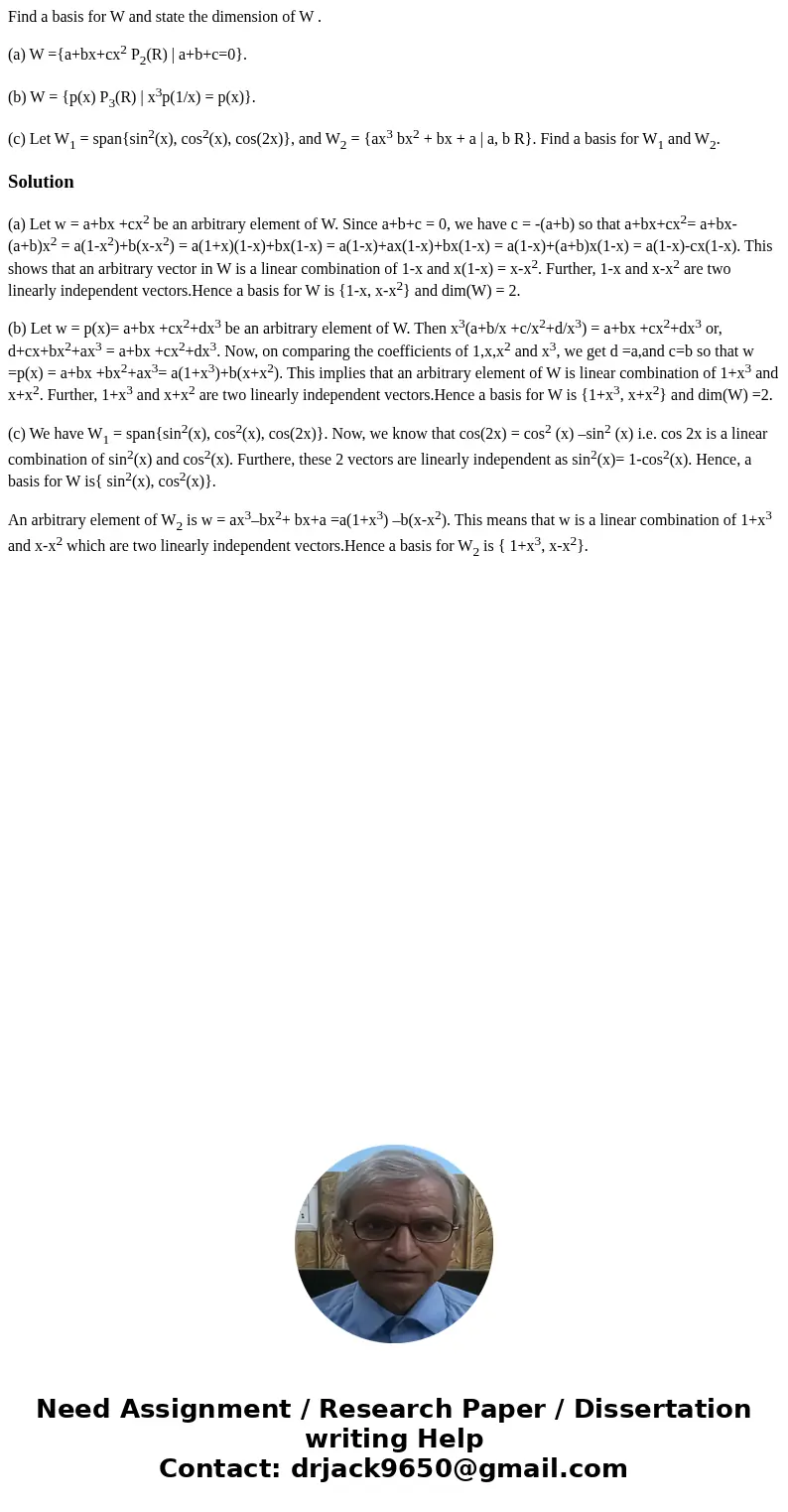Find a basis for W and state the dimension of W a W abxcx2
Find a basis for W and state the dimension of W .
(a) W ={a+bx+cx2 P2(R) | a+b+c=0}.
(b) W = {p(x) P3(R) | x3p(1/x) = p(x)}.
(c) Let W1 = span{sin2(x), cos2(x), cos(2x)}, and W2 = {ax3 bx2 + bx + a | a, b R}. Find a basis for W1 and W2.
Solution
(a) Let w = a+bx +cx2 be an arbitrary element of W. Since a+b+c = 0, we have c = -(a+b) so that a+bx+cx2= a+bx- (a+b)x2 = a(1-x2)+b(x-x2) = a(1+x)(1-x)+bx(1-x) = a(1-x)+ax(1-x)+bx(1-x) = a(1-x)+(a+b)x(1-x) = a(1-x)-cx(1-x). This shows that an arbitrary vector in W is a linear combination of 1-x and x(1-x) = x-x2. Further, 1-x and x-x2 are two linearly independent vectors.Hence a basis for W is {1-x, x-x2} and dim(W) = 2.
(b) Let w = p(x)= a+bx +cx2+dx3 be an arbitrary element of W. Then x3(a+b/x +c/x2+d/x3) = a+bx +cx2+dx3 or, d+cx+bx2+ax3 = a+bx +cx2+dx3. Now, on comparing the coefficients of 1,x,x2 and x3, we get d =a,and c=b so that w =p(x) = a+bx +bx2+ax3= a(1+x3)+b(x+x2). This implies that an arbitrary element of W is linear combination of 1+x3 and x+x2. Further, 1+x3 and x+x2 are two linearly independent vectors.Hence a basis for W is {1+x3, x+x2} and dim(W) =2.
(c) We have W1 = span{sin2(x), cos2(x), cos(2x)}. Now, we know that cos(2x) = cos2 (x) –sin2 (x) i.e. cos 2x is a linear combination of sin2(x) and cos2(x). Furthere, these 2 vectors are linearly independent as sin2(x)= 1-cos2(x). Hence, a basis for W is{ sin2(x), cos2(x)}.
An arbitrary element of W2 is w = ax3–bx2+ bx+a =a(1+x3) –b(x-x2). This means that w is a linear combination of 1+x3 and x-x2 which are two linearly independent vectors.Hence a basis for W2 is { 1+x3, x-x2}.

 Homework Sourse
Homework Sourse